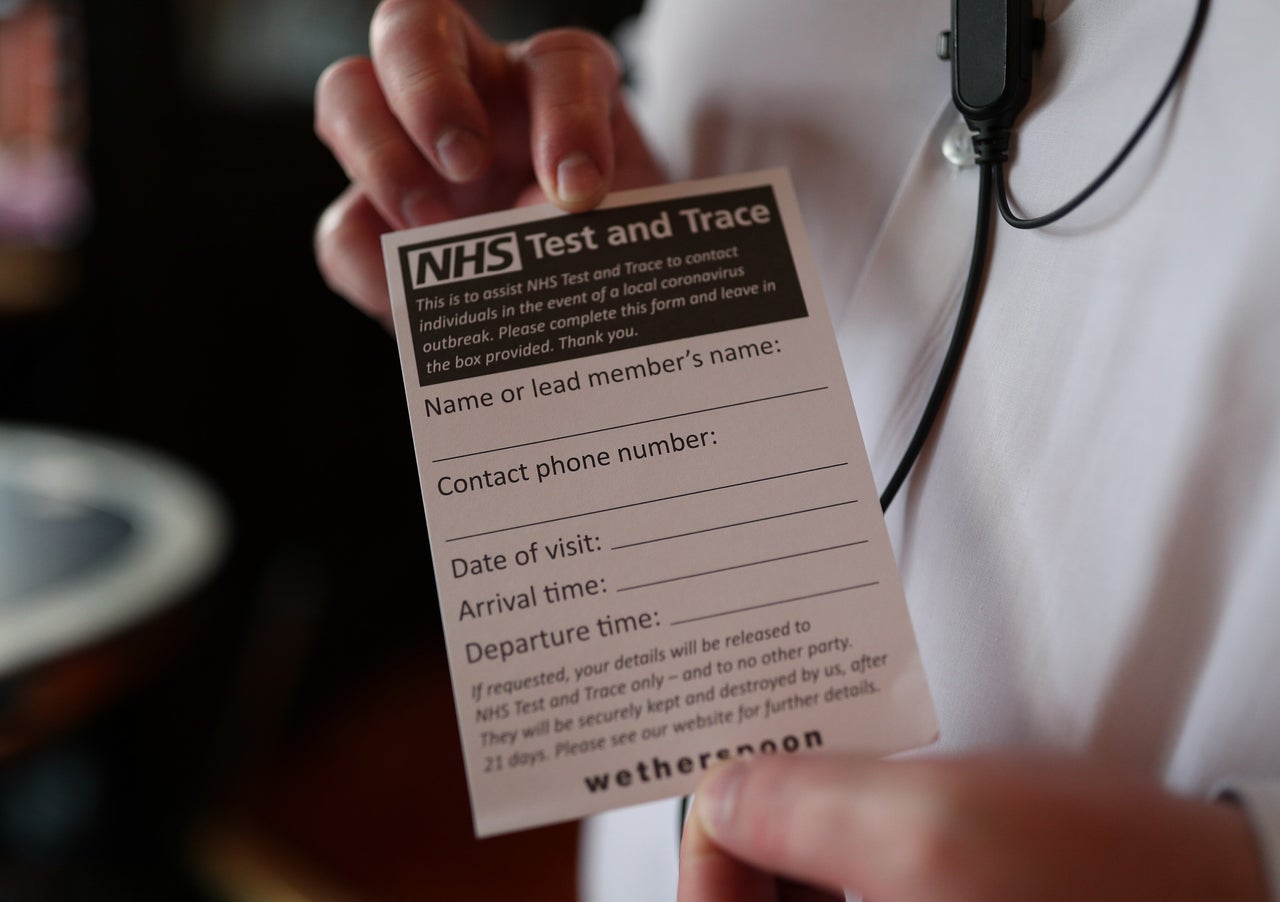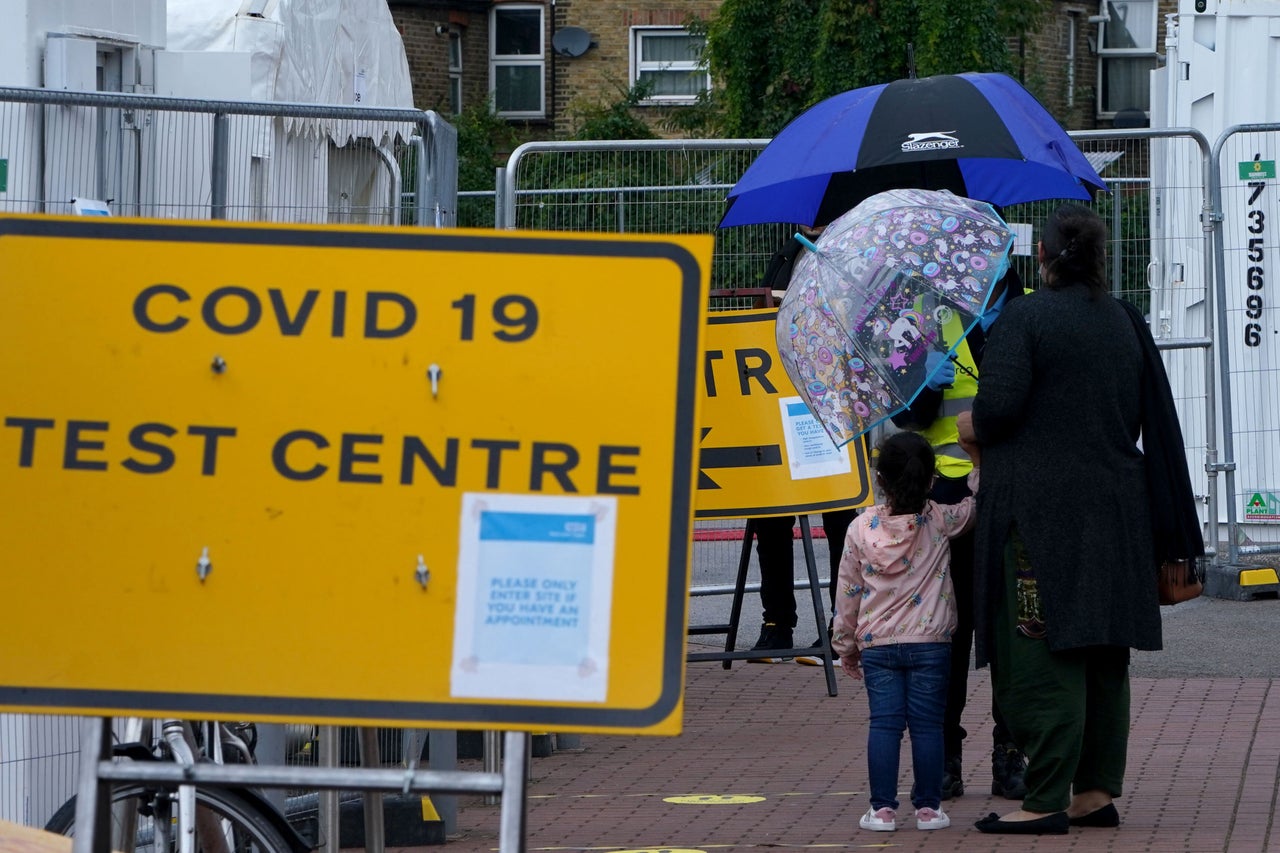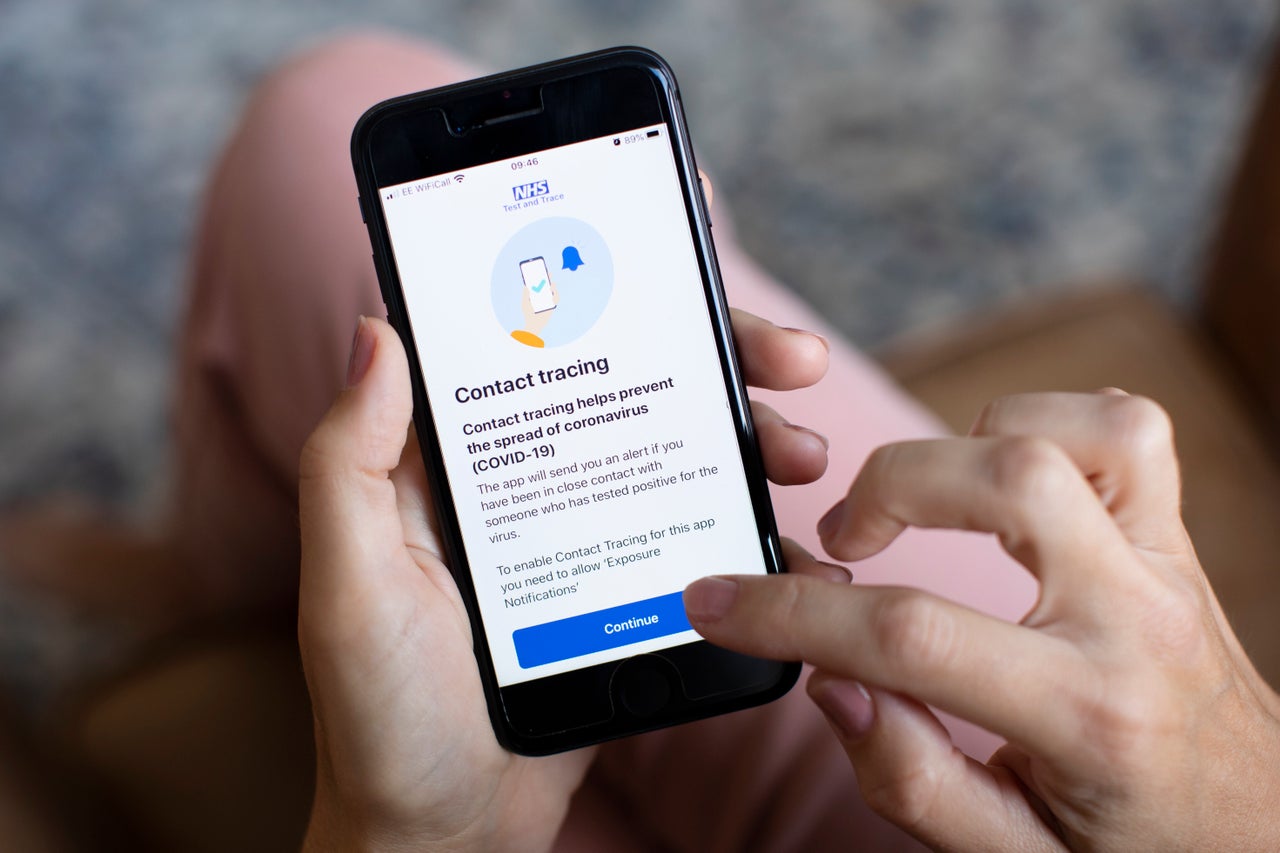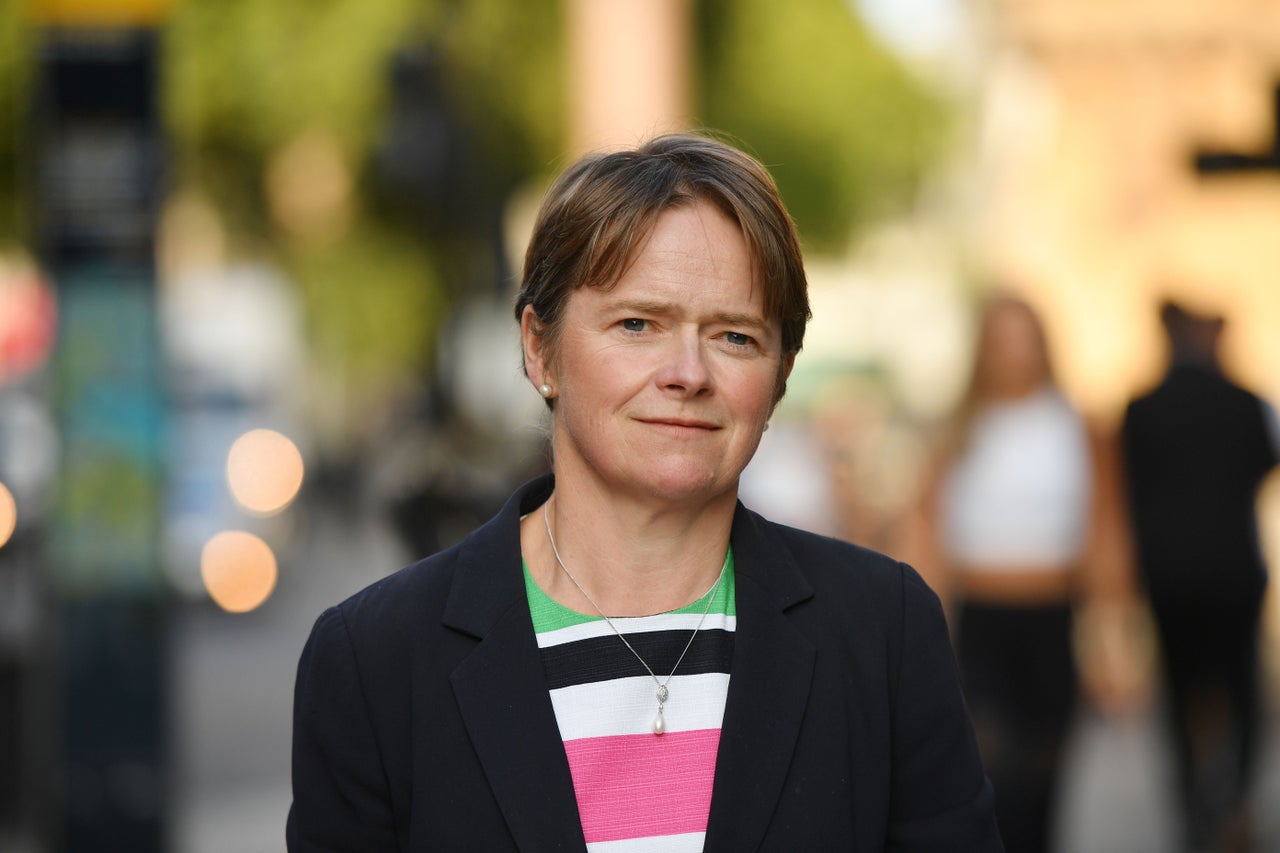The NHS Test and Trace system – which has been branded “world beating” by the prime minister – is meant to be a serious weapon in the government’s arsenal in the fight against Covid-19.
But serious concerns have been raised about its effectiveness, at the centre of which are questions about how many people are actually being reached by contact tracers.
Figures released on Thursday showed that just 62.6% of cases of people who tested positive for Covid-19 were being reached and told to self-isolate to stop the spread of the virus.
These latest figures are the worst since the so-called NHS Test and Trace service (which is largely run by outsourced private companies) was launched in May, but only the latest evidence the system is not working.
Without a viable “test, trace and isolate” system, thousands upon thousands of people could be going out and spreading the disease unknowingly. Cases will continue to rise – as will deaths.
HuffPost UK spoke to councils who described being forced to set up their own procedures in order to plug holes in the one-size-fits-all national system.
Here are the reasons why the current Test and Trace system is failing the country.
Language barriers
For the councils who have forged their own paths and created local tracing schemes, there are a number of holes in the national strategy – many of which focus on the one-size-fits-all approach by the government.
In August, Calderdale Council in West Yorkshire launched its own tracking system, after it was estimated that the NHS Test and Trace system was only reaching 68% of contacts in Calderdale amid a surge of coronavirus cases in the area.

The local tracing scheme focuses on contacting the people who have been missed by the national system – which attempts to reach people for 48 hours before moving on – and live in areas with high levels of coronavirus.
Like other local systems, the Calderdale scheme takes the data collected by the NHS Test and Trace scheme and follows it up.
In Calderdale, many of the people who are falling through the gaps of the NHS system do not have English as a first language or are asylum seekers or refugees, said Deborah Harkin, the council’s director of public health.
“We have local knowledge of our communities that no national system could ever have,” she said. “And that local knowledge of our communities will really help us tailor the contact tracing intervention to particular communities.
“So for some groups it will be speaking the community language. In other instances it will be working with voluntary organisations who are trusted in the local community.”
People don’t answer the phone
Calderdale’s local tracing system uses local phone numbers to contact people, but will also go door-to-door to reach people – another difference from the national programme.
“Some people in our really disadvantaged areas live in circumstances which mean it’s difficult for them to engage with a national service,” Harkins said.
“For example, worries about unrecognised phone numbers – ‘Who is that ringing me?’ There are lots of reasons people might be afraid of receiving calls from numbers they don’t know.”
Unlike other councils, which have blasted the national service, Calderdale wants to work “in partnership” with the NHS system.
But the council has warned that it must get additional support from the government in order to make tracing in the area effective and push down rates of coronavirus.

“When we put together our local outbreak prevention and management plan, we were told that it wasn’t something we would be expected to do – the local contact tracing,” Harkins said.
“So the allocation the government gave us for outbreak prevention and control, we have allocated that for other functions we are responsible for.”
It’s too slow
Other local authorities have issued much more direct criticism of the national system. Sandwell Council – one of the first councils to set up their own tracing system – accused the NHS Test and Trace scheme of lacking “urgency”.
“I wouldn’t quite go as far as to say we’ve given up on Test and Trace, but we’re not happy with just allowing them to do their job any more,” Lisa McNally, Sanwell’s director of public health, told Sky News.
“As soon as the new case comes in now, we’re not waiting for Test and Trace to fail to reach them – we’re phoning them the same day.”
Like Calderdale, Sandwell Council is focusing on using its local language resources to reach the people missed by the national system.
“We will have a language speaker available for them, immediately – if we find out they only speak Punjabi, Urdu, Arabic, et cetera – so we can first of all give the important messages that they need to know,” she said.
It only looks forward, not backward
But not every council that has launched its own tracing programme to plug the holes in the NHS Test and Trace system is focused on reaching the contacts missed by national tracers.
Liverpool City Council is carrying out “reverse contact tracing” – something director of public health Matthew Ashton branded “complementary but different” from the national system.
While Test and Trace officials said in July they were trialling backward contact tracing – which tries to identify where a coronavirus patient contracted the virus in the first place – it has not yet been rolled out across the country.

“Reverse contact tracing is asking positive cases where they have been for the last 10 to 14 days and therefore where they might have got the virus from in the first place,” Ashton said.
This strategy is key for tackling outbreaks of coronavirus head-on, he explained.
“It allows us to try and understand where the sources of the virus might be – the risk factors. Is it coming from a school, a business, a meat-processing plant, a religious setting, a community gathering?
“It allows us to then put other interventions into place to control that risk.
“We have an outbreak in our Princess Park ward and therefore we have a small group of people on the streets, going door to door with positive cases and asking them more questions to try and understand those routes of transmission.
“It also means we can understand their situation and offer them support if they need it.”
Like Calderdale, Liverpool wants to work “hand in hand” with the national system.
The Local Government Association has called for councils to be given everything they need to help reach those missed by national tracers, saying Covid-19 must be seen as a “pattern of local outbreaks, rather than a national pandemic with a similar impact in every community”.
“Councils’ public health teams need to be able to use their unique expertise, including speaking other languages and understanding of their communities, to try to reach those who cannot be contacted by the test and trace system,” a spokesperson said.
They must be given the right “powers, flexibilities, data and long-term funding”, they added.
It’s not testing enough
The UK’s Pillar 1 testing for hospital inpatients and health and care workers, for which results are analysed at NHS and Public Health England labs, appears to be meeting demand. The problem lies with Pillar 2 testing, which focuses on testing people in the community – at local drive-in and walk-in sites.

Stories have abounded of people unable to access tests, being told there are no appointments available at centres in England and no home tests kits available either. In some cases people were told to travel hundreds of miles only to find the centre had already closed.
Although the system has managed to dramatically increase testing capacity from 2,000 a day to around 300,000 a day, its performance on getting tests to those who need them has remained under fire – and it is still well short of the 500,000 a day target.
Dido Harding, chair of NHS Test and Trace, has defended testing failures by saying there was an “unexpected” surge in demand, with many people without symptoms said to be seeking checks.
It’s not quick enough
A fast turnaround for test results is crucial to tackling the spread of Covid-19. The government’s Scientific Advisory Group for Emergencies (Sage) has stressed the importance of delivering rapid test results, ideally within 24 hours.
Boris Johnson has previously told parliament that he wanted a 100% completion rate by the end of June, but that ambition has never been met.
But the latest official figures showed just 32.6% of people who had an “in-person test” – at a regional site, local site or mobile testing unit – receiving their result within 24 hours.
This is up from 27.4% in the previous week, but still a long way short of the 100% that Boris Johnson promised. The median distance needed to travel to a test also fell.
For all testing routes, including home tests and satellite centres used for care homes, just 14.8% got results within 24 hours, up on the 12.8% in the previous week.
It isn’t tracing
At the centre of all the concerns surrounding NHS Test and Trace are questions about how many people are actually being reached by contact tracers.
Figures released on Thursday showed just 62.6% of “close contacts” – defined as being within two metres of a Covid carrier for more than 15 minutes – are actually being reached.

This represents the worst ever figures for tracking down “close contacts” of people with Covid, since the so-called NHS Test and Trace was launched in May, and down on the previous week’s 68.8%, itself a record low at the time.
It means that nearly a third of all people who have been in contact with someone testing positive for the virus have not been reached – and not told to home quarantine for 14 days.
The PM’s independent scientific advisers have repeatedly warned that stopping the spread of the disease requires more than 80% of “close contacts” of people with Covid reached by the system to be identified and then told to self-isolate.
The public doesn’t trust it
The NHS Test and Trace system, which is headed by Tory peer and former TalkTalk phone giant boss Dido Harding, has been dogged by criticism since it began earlier this year, with many attacking its use of private firms like Serco and Deloitte.
Recent reports that private sector consultants are being paid day rates of around £7,000 to help with the system have been slammed by Labour, who say the government is “obsessed” with outsourcing.

Labour’s shadow Cabinet Office minister Rachel Reeves said on Wednesday: “It’s failing to reach people who have come into contact with someone with the virus, it’s not getting information to local councils who need to act on it and it’s wasting hundreds of millions of pounds’ worth of taxpayers’ money that could be spent on a local response using local expertise.”
A Survation survey, shared exclusively with HuffPost UK, has shown 74% want local public health teams, rather than Serco and Sitel, to run NHS Test and Trace.
There has also been widespread public anger over ministers and government officials breaching or forgetting Covid lockdown restrictions, reinforcing the “one rule for them, another for everyone else” argument as the rest of the country toes the line.
Last month Tory MP Danny Kruger was caught out by a member of the public travelling unmasked for the entire duration of an hour-long train journey, later claiming he “quite simply forgot”.
And of course there was the time the PM’s chief aide Dominic Cummings visited Barnard Castle with his wife and son to test his “eyesight” having travelled from London to Durham at the height of the pandemic.
Defending NHS Test and Trace
The prime minister has apologised for the “bad experiences” people have had with NHS Test and Trace after weeks of failings in the service, saying he took “full responsibility” for the underperformance.
On Thursday health secretary Matt Hancock told MPs: “This week’s NHS Test and Trace statistics show that testing capacity is up, testing turnaround times are down, and the distance travelled for tests is down too.
“And, thanks to this capacity and this analysis, we’ve been able to take a more targeted approach, keeping a close eye on the situation in local areas, bearing down hard through restrictions on a local level where they’re necessary.”
